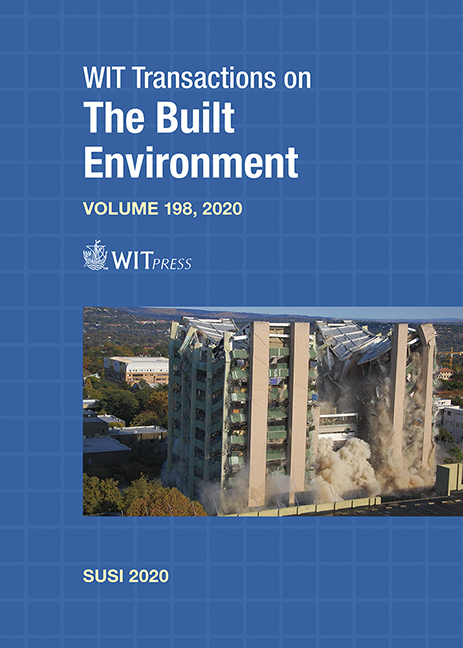MULTI-SCALE EXPERIMENTAL STUDY OF BLAST PROPAGATION AROUND A HEMI-CYLINDRICAL BARRIER
Price
Free (open access)
Transaction
Volume
198
Pages
12
Page Range
53 - 64
Published
2020
Paper DOI
10.2495/SUSI200051
Copyright
WIT Press
Author(s)
SOPHIE TRÉLAT, MICHEL-OLIVIER STURTZER, DOMINIQUE ECKENFELS
Abstract
Interaction between large blast and targets can rarely only be directly studied, due to cost and practicality considerations. Blast tests using reduced-scale high explosive charges represent an attractive alternative. The first necessary step consists in studying blast propagation in free-field at the considered scales. The second step focuses on the determination of the blast load around various types of reference obstacles, in order to provide a critical input for numerical simulation. This approach also aims to build simplified models allowing faster risk assessment for government agencies. Since 2017, the French Institute for Nuclear Safety (IRSN) and the French-German Research Institute of Saint- Louis (ISL) have been studying blast propagation in free-field and in front of a hemi-cylinder at two different reduced scales using Hexomax® charges. IRSN developed a significant experience on hemispherical blast effect assessment using 42 g reference Hexomax® charges detonated in contact with a planar surface supporting a hemi-cylindrical obstacle, both equipped with pressure sensors. Based on this experience, ISL developed its own outdoor blast-pad: 333 g Hexomax® charges are detonated in a factor two up-scaled version of IRSN test configuration. Similar sensors are flush-mounted on the pad and the surface of an up-scaled version of the IRSN obstacle. In addition, the fine structure of the shock transmitted into the air and propagating along the obstacle surface is studied using high-speed imaging. Two respective series of charges were detonated at distances between 0.6 and 3.5 m/kg1/3 from the hemi-cylinder, in order to assess its influence on the wave reflection structure and the resulting blast load. High-speed images enabled the triple and contact points tracking on the obstacle. Finally, this project illustrates an innovative methodology not only to assess the blast load on a convex structure, but also the potential downstream protective effects of such a structure used as a barrier.
Keywords
blast wave, hemi-cylindrical structure, detonation, plastic explosives, reduced-scale charges, effect on infrastructures, experiments, convex, Mach reflection





